As an easy to grow perennial that can produce reliable crops of sweet and juicy fruits each year, it’s no wonder the blueberry is a popular choice for home gardeners.
Occasionally, these relatively low maintenance shrubs may benefit from being relocated.
Perhaps you’ve propagated new bushes. Or they have outgrown their space or are not thriving in their current location. Or maybe you’re moving and don’t want to leave those well cared for bushes behind!

We link to vendors to help you find relevant products. If you buy from one of our links, we may earn a commission.
Whatever the reason, transplanting blueberries is easy to do.
As long as you follow a few simple guidelines, you can move them from one place to another without damaging plants or fruit production.
Read on to learn the best way to transplant blueberries.
What You’ll Learn
The process of relocating a blueberry shrub is pretty straightforward.
Just be sure to time the transplant appropriately, choose a suitable site, and provide adequate water following the big move.
Preparing to Transplant
Transplanting should take place during dormancy if possible. These shrubs have shallow roots, and disrupting them during active growth can cause stress to the plant.
By digging them up during dormancy, plants have time to recover from transplant shock before the growing season begins.
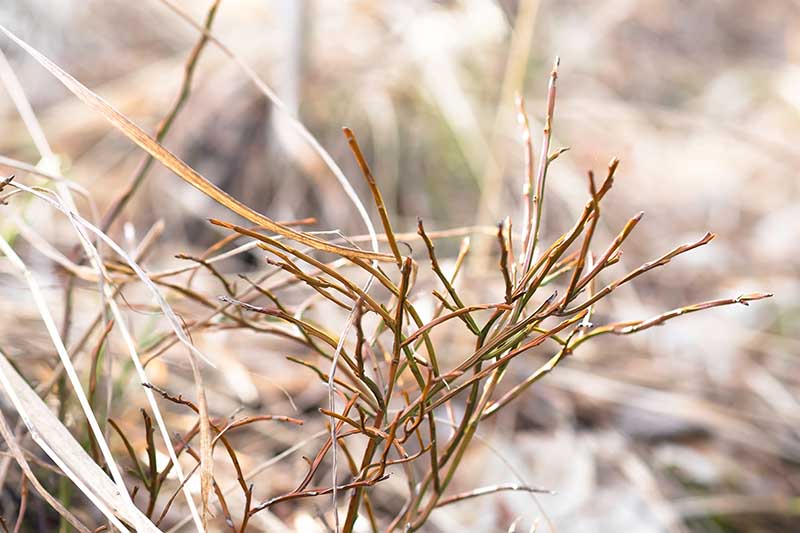
In mild climates, this is typically anytime between November and March. In colder locations, it will be after leaves have dropped in the fall but before the ground freezes, or in early spring once the ground is workable.
There is more flexibility when transplanting container plants, since the feeder roots are more likely to stay intact than when they are being dug from the ground.
Even so, it is best to stick to spring or fall and avoid the hot summer sun.
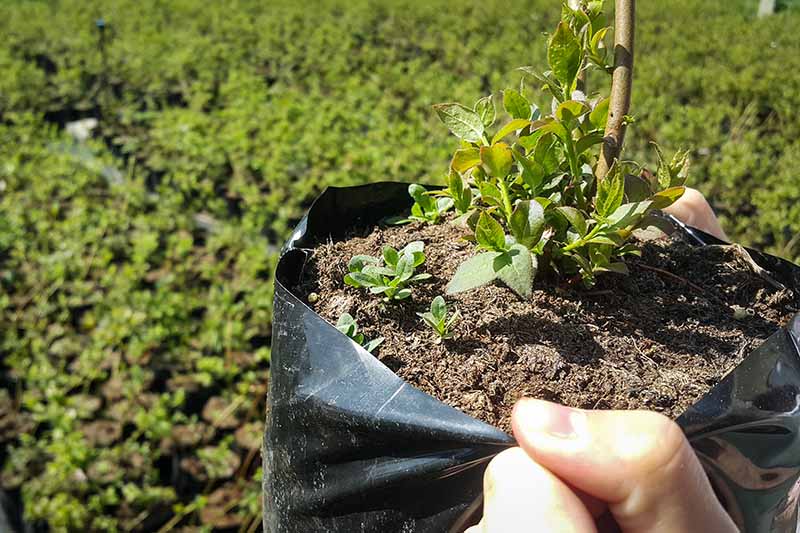
When you are ready to transplant, find a new spot with conditions suited to growing blueberries. The site should ideally be in full sun, with rich well-drained acidic soil.
You can purchase a home test kit to help you determine the pH of the soil. It should be somewhere between 4.0 and 5.0. Learn more about testing your soil in this guide.
If soil is too alkaline, try working in a couple inches of peat moss, shredded pine bark, or composted leaf mold prior to planting.
You can even sprinkle a few handfuls of used coffee grounds at the planting site to increase acidity.
Transplanting Tips
Once the new site is ready, it is time to dig up the shrub.
Use a flat shovel to dig straight downward into the soil about a foot out from the stem of the plant. Since the roots are shallow, you won’t need to go more than a foot or so deep.
Slide the shovel horizontally under the roots and lift gently. Continue in a circle around the shrub until you are able to easily pull it free.
If you are transplanting a potted plant, use a garden knife to gently loosen the soil around the perimeter and then remove it from its container.
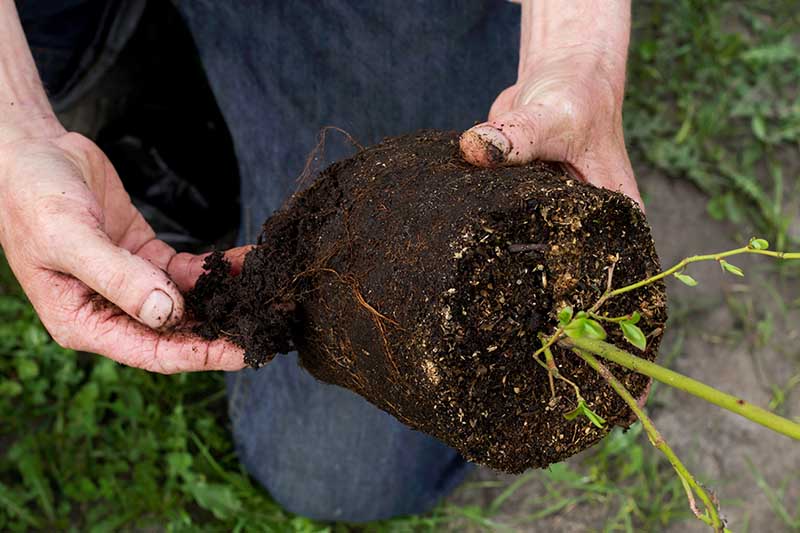
If it has become root bound, you can use your hands or pruners to carefully pry apart the ends of the roots.
It is best to replant blueberries that you have dug up right away.
If this isn’t possible, you can wrap the root ball in plastic and set the bush in a sheltered location out of direct sun until it can be planted, but do not wait longer than a few days.
When you are ready to plant, dig a hole just deeper and wider than the root ball.
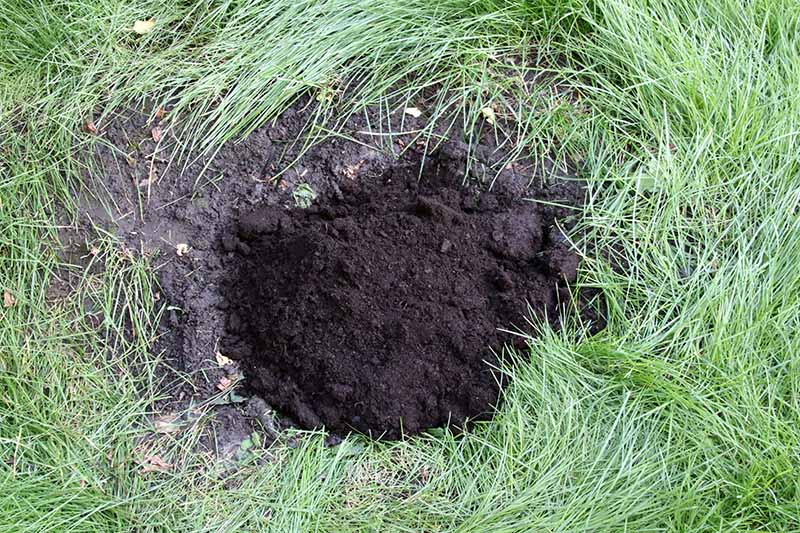
You can add a little sawdust, composted pine bark, coffee grounds, or peat moss to the hole to increase acidity if necessary.
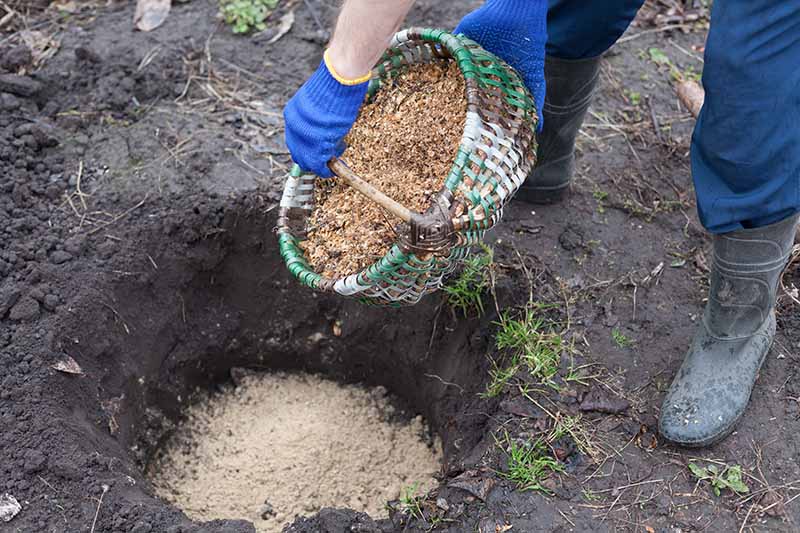
Place the shrub in the hole and backfill with soil.
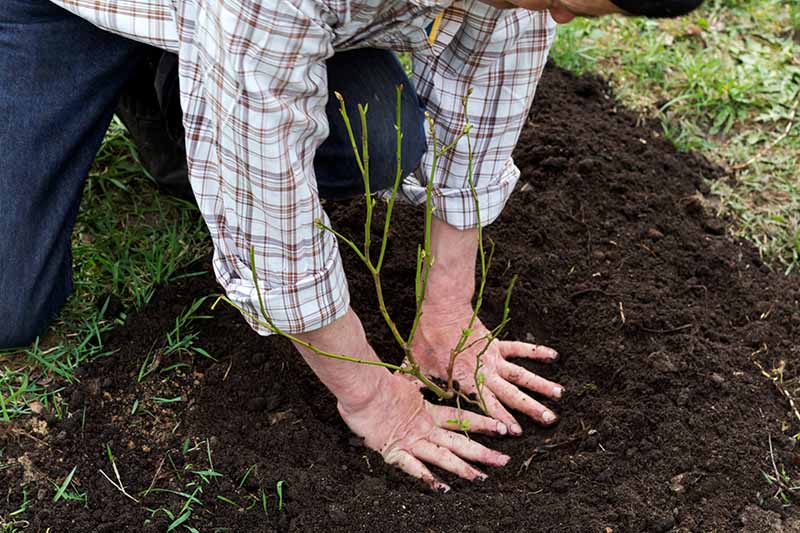
Mulch with a few inches of pine needles, shredded pine bark, or sawdust, leaving two to three inches unmulched around the stem.
If planting multiple shrubs, plan to leave at least five or six feet between each.
Water Water Water
Water deeply immediately after planting, and continue to water often, making sure the top inch of soil always remains moist.
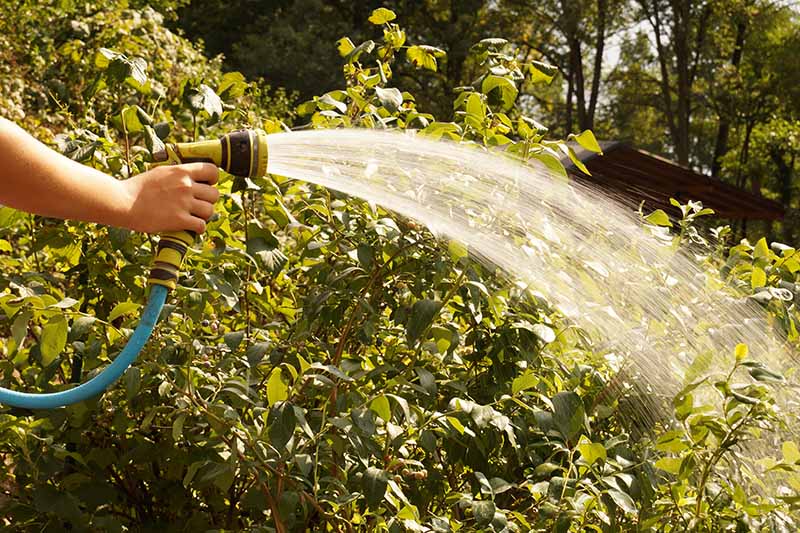
Blueberries have shallow roots, and surface roots can dry out easily. It is therefore important to water deeply and regularly to avoid this.
Shrubs should receive at least an inch of water per week and up to four inches during fruiting.

A soaker hose works well because it will deliver water directly to the roots.
Just the Ticket
It’s a good thing transplanting blueberries is so easy. Sometimes, this can be exactly what is needed to revive an underperforming shrub.
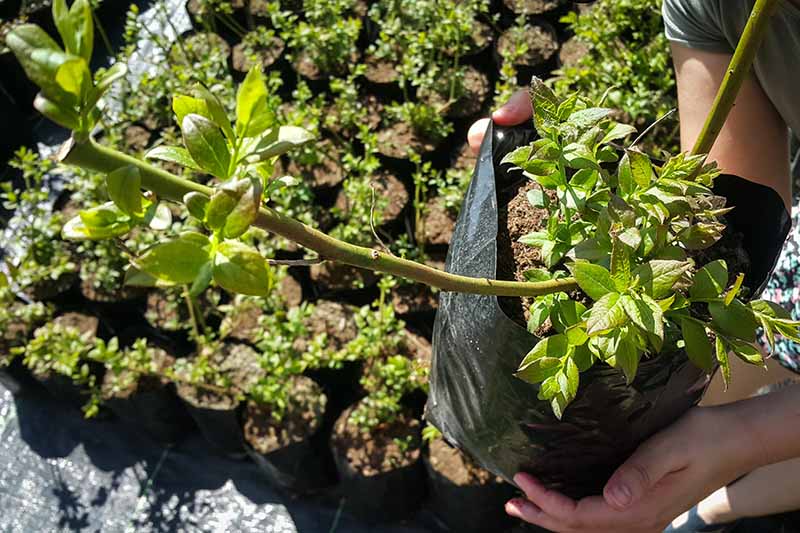
Just follow the tips described above and before you know it, your blueberry bushes will be flourishing!
Have you moved blueberry shrubs to a new location? Share your experience in the comments section below.
And for more information about growing blueberries in your garden, check out these guides next:

I have 50 ten-year-old large blueberries. Any special recommendations for bigger, older bushes?
I wonder the same thing. I have a 20 yr old plant I want to move. Wish we could get an answer here!
I live in Connecticut. My friend is selling her home and I would like to dig up several 4 foot blueberry bushes and plant them immediately to my home in Ct. Can I move them now? It is March 26 today?
We just moved ours yesterday and we are in Virginia. We are having cooler/wetter than normal weather right now so we made the decision to go ahead and move them before its too warm or have to wait until fall.
Hi Donna, yep, it would be fine to go ahead and move them now. So long as it isn’t too hot and you get enough root it should be fine.